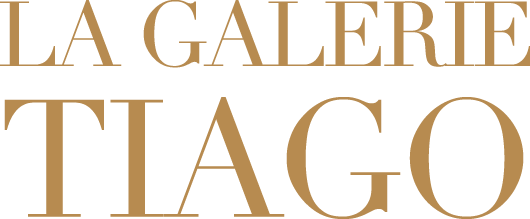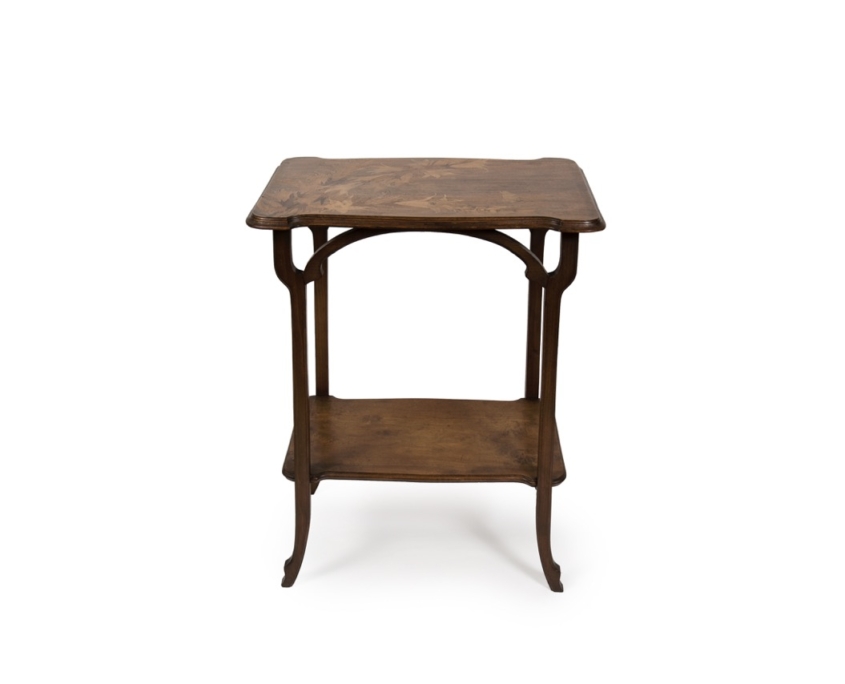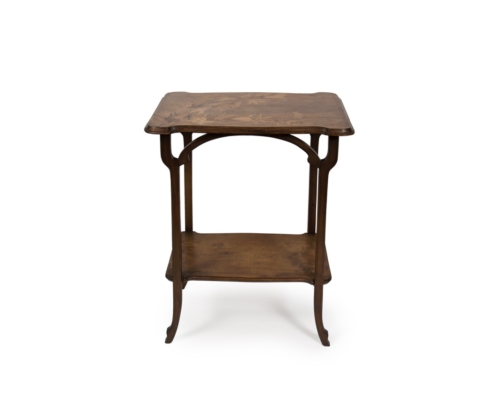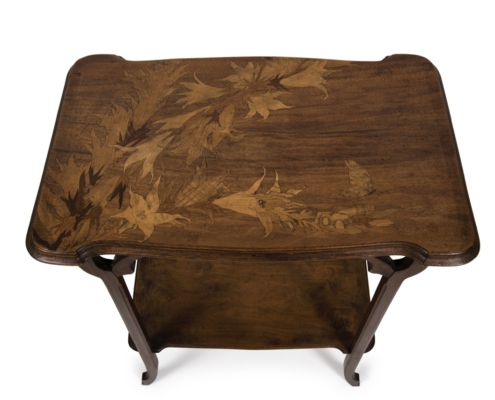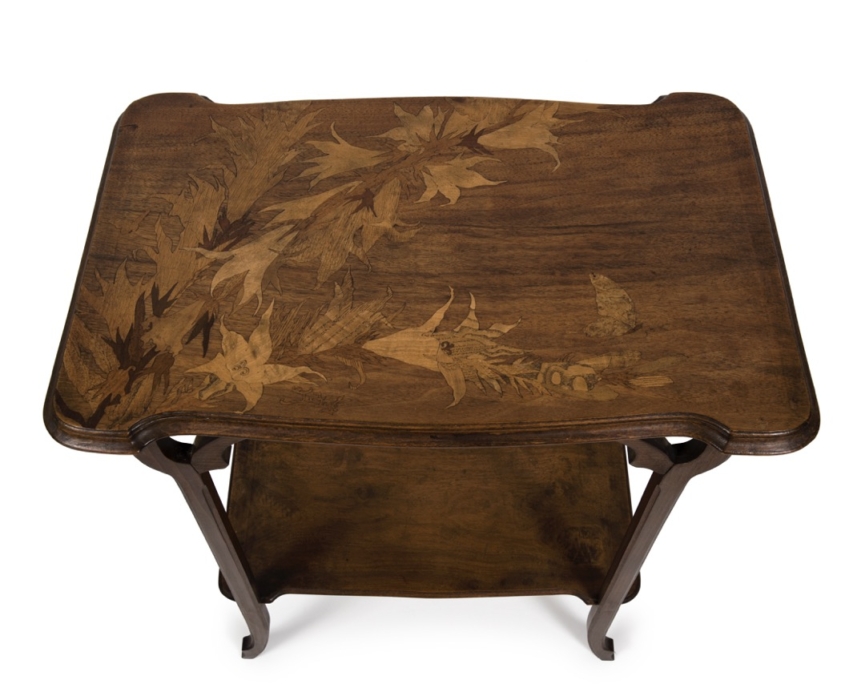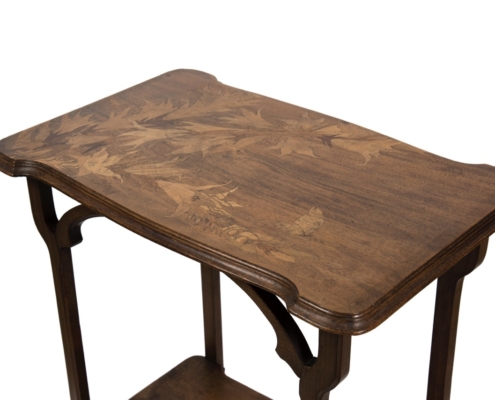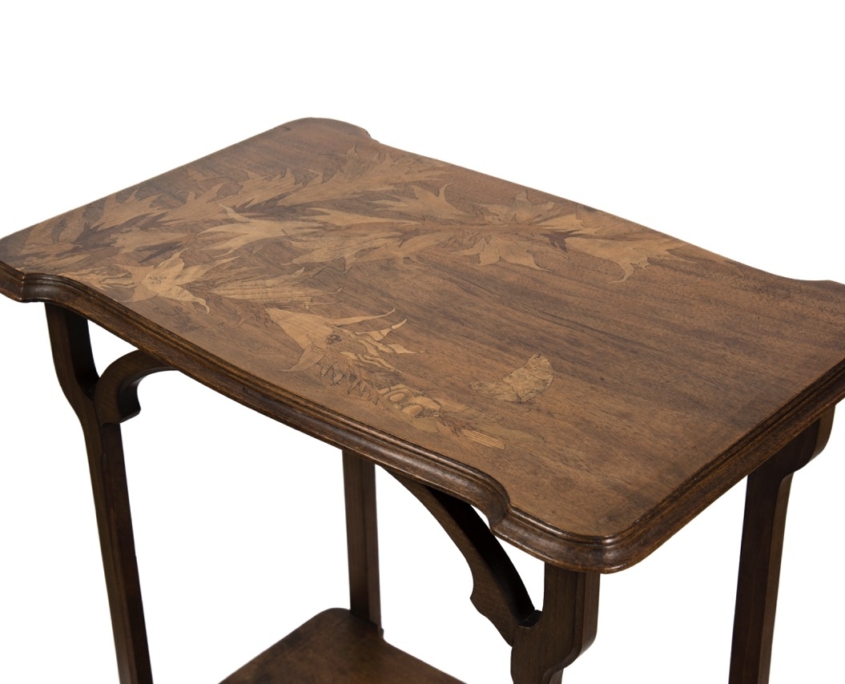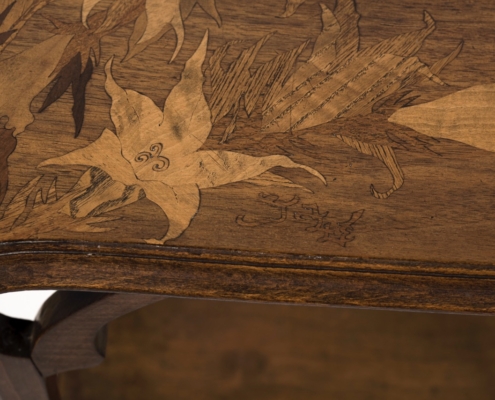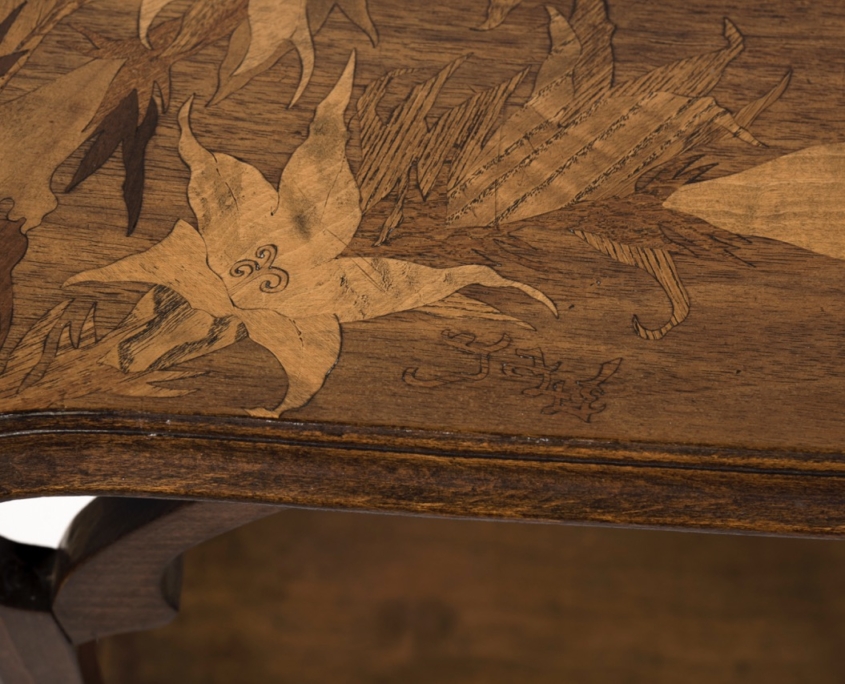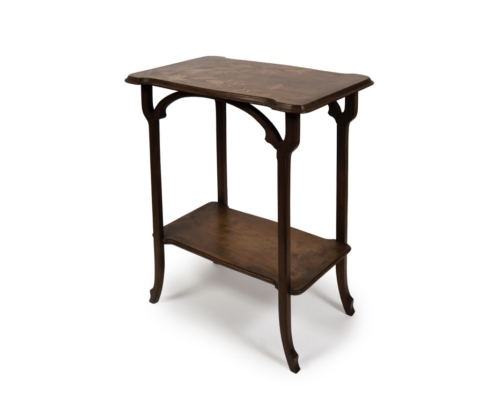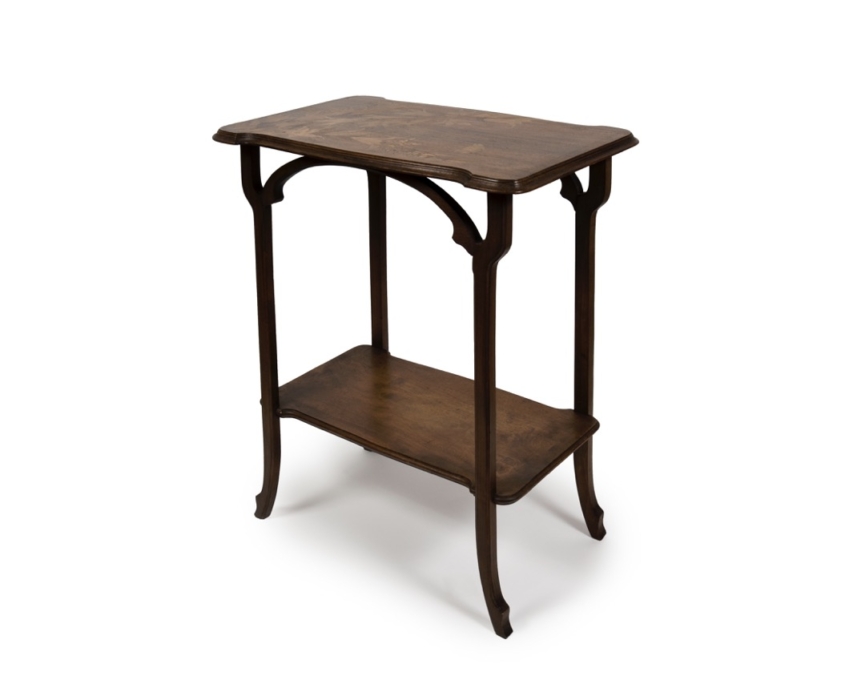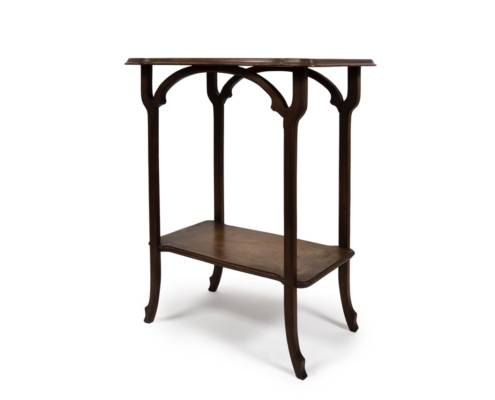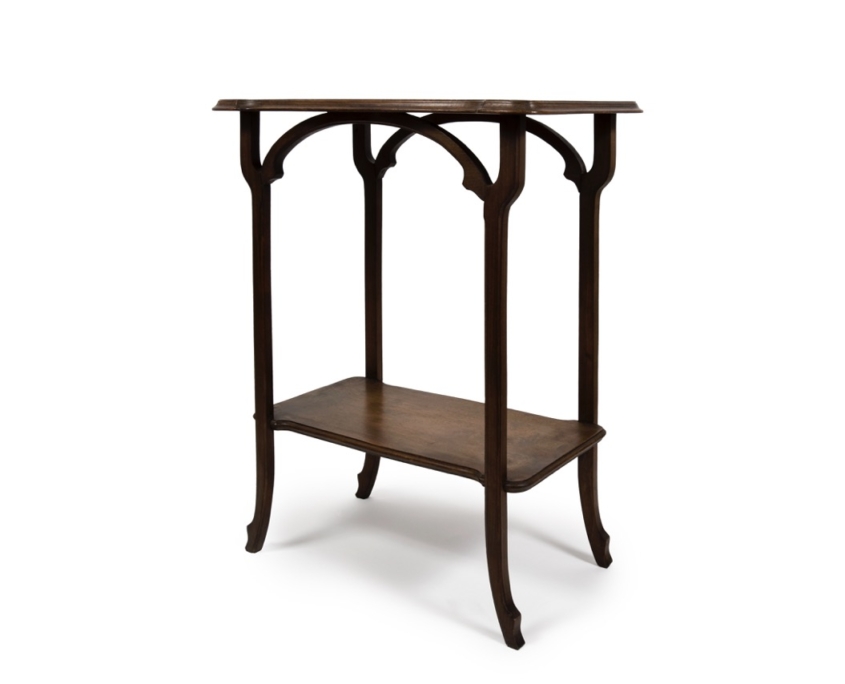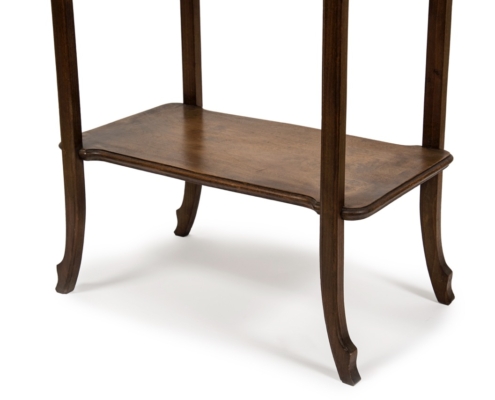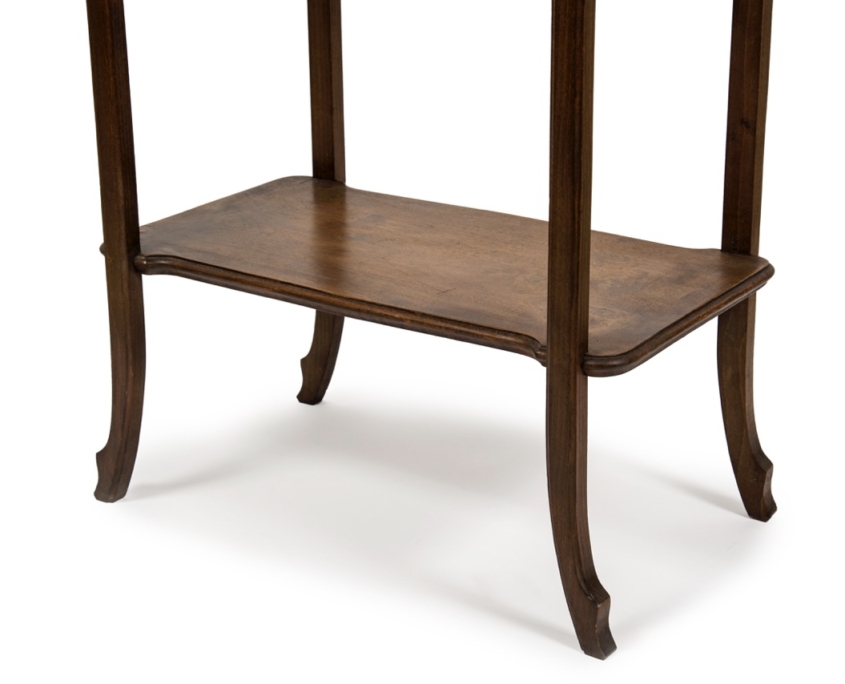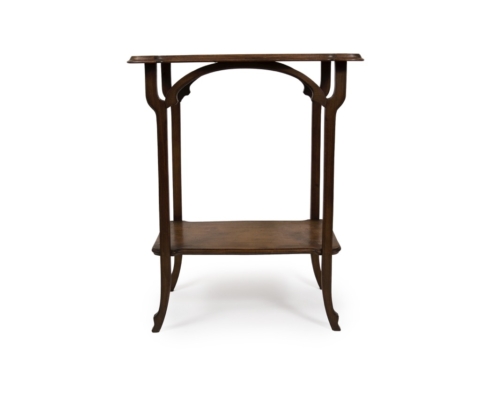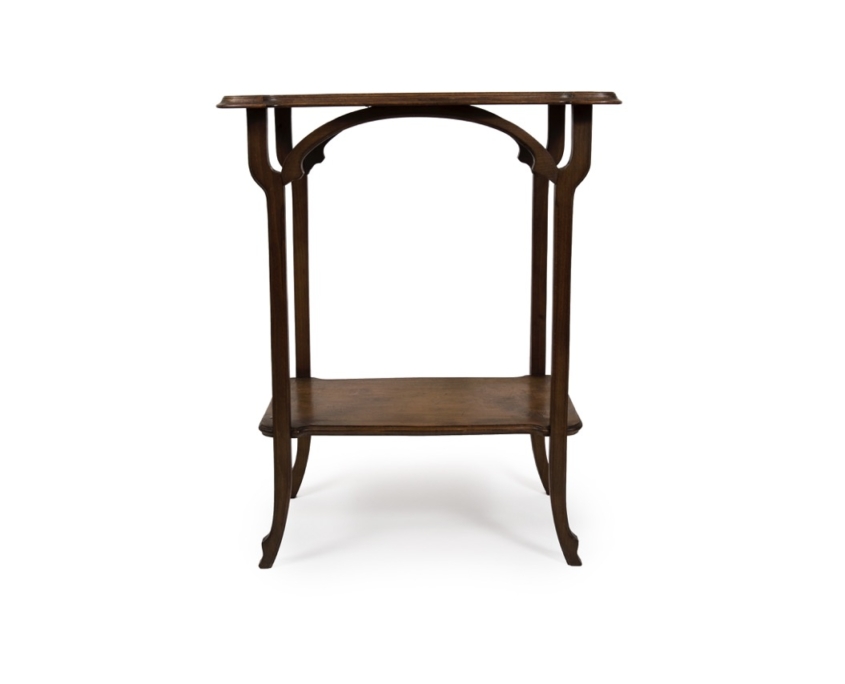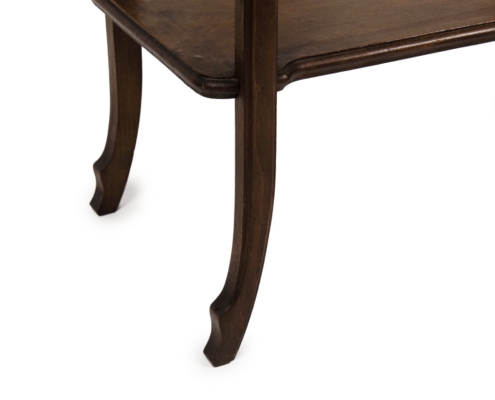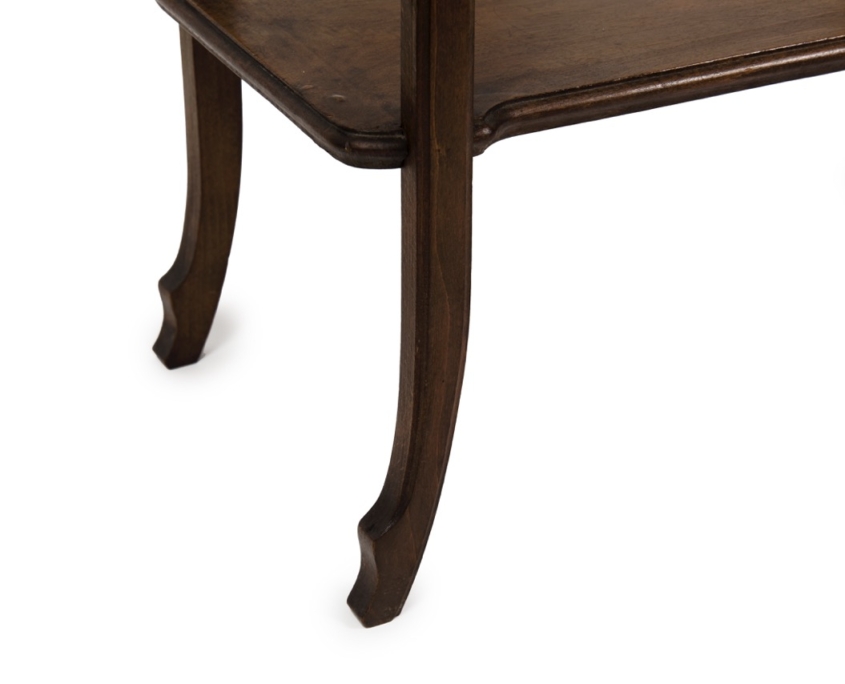MARQUETRY TABLE WITH FLORAL DECORATION, ÉMILE GALLÉ – 1900
Reference: 2024-1224
Tea table with two curved rectangular plates in pear, walnut, oak and snakewood.
The upper plate features an inlaid decoration of Lorraine flora (Eastern France close to Germany) and butterflies spreading out from the lower left corner. The slightly curved legs split in two to form a semi-circular arch supporting the top.
The shape and motif of the table are united by a genuine organicity with a strong link to nature.
Signed “Gallé” in marquetry on the upper tabletop, bottom left.
France, Émile Gallé (1845-1904) – Circa 1900
Height: 29.5 in / 75 cm – width: 23.2 in / 59 cm – depth: 15 in / 38 cm



